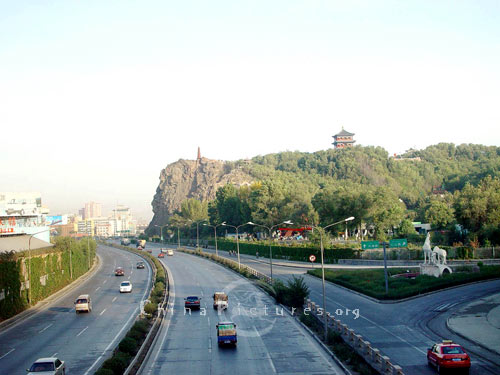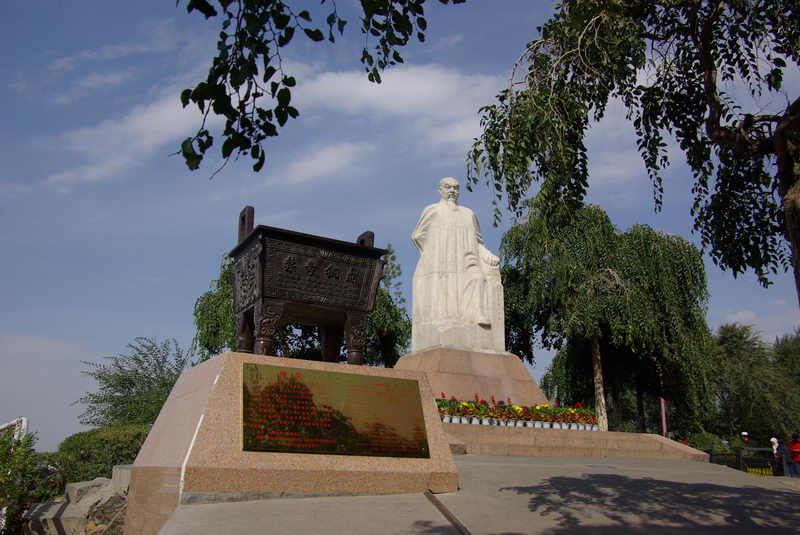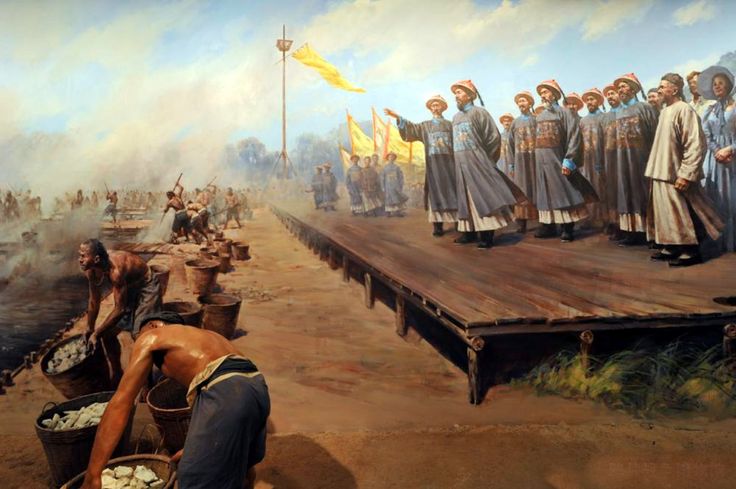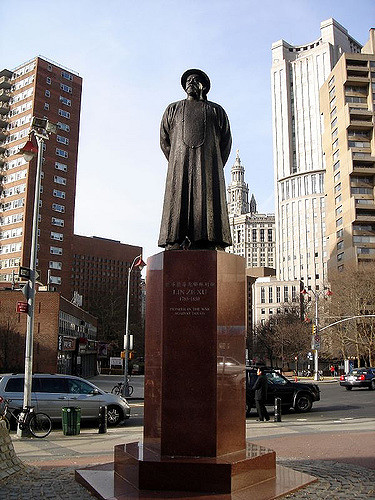Discovering Lin Zexu in Red Hill Park
One Sunday afternoon I was exploring Red Hill Park with friends in Urumqi, capital of Xinjiang Autonomous Region, in the far northwest of China. As is typical of Chinese parks, there were gardens, pagodas, a small lake, and lots of people. We came upon a statue of someone important. It seemed to have some photographic potential, so I shot it… and then was on my way again. My friend suggested I should not be so ignorant of Chinese history and informed me the statue commemorated Lin Zexu, a former governor of this region.
Only later did I learn the significance of this man, and the fact that students throughout China learn of him as a hero of recent Chinese history.
The story goes like this.
One hundred fifty years ago in the south of China, the British persisted in trying to pry open some trading concessions in a country that sensed little need to do business with Europeans. One product that produced some brisk trade was opium. The market in China was expanding, and the British were profiting from the trade.
No, opium was not illegal in those days. Indeed, opium was recommended in the West as a cure for a variety of ailments. In China, the number of users was on the increase and there was much evidence it was becoming a major social problem for China.
The emperor summoned Lin Zexu from his governor responsibilities in Hunan and Hubei to a new post in Canton, present day Guangzhou. He was to do what he could do to stamp out this opium trade. Lin Zexu, appealed to the British traders to curtail the trade, then wrote a fascinating letter to Queen Victoria asking her to take action with her traders. Finally, with no resolution to the problem, Lin Zexu summoned his para-military men to raid the port area and destroy a few hundred cases of opium that the British had stockpiled there. Many went up in smoke, and others were dumped into the sea.
For those in the West, this sounds not unlike the Boston Tea Party… but, with quite a different ending.
Unfortunately for Lin Zexu and his country, this act of defiance against the so called “barbarians” created reasons for the British to amass a nasty naval exercise that brought a few dozen war ships into Canton Harbour to pound the hapless Chinese into submission. The battle is known as the First Opium War, and China was forced to adjust to what became known as the Hundred Years of Humiliation.
But, the emperor did not exactly celebrate the audacity of his man, Lin Zexu. The result of this noble attempt to thwart the 19th century drug trade only created more horrendous problems for China. And so, Lin Zexu was more or less banished to the outer reaches of the empire here in Xinjiang. But here he earned a great reputation among the people for good governance and, like his time in Hunan and Hubei, and successfully eradicated the opium trade within his region.
This is not the end of the story of Lin Zexu. Later he was brought back to put down the Taiping Rebellion (which is another interesting story), and thereby earned other good reasons to be remembered in the history books of China.
So it was, on Red Hill in a far corner of China, I had stumbled upon one of the most interesting Chinese characters in the difficult struggles between East and West.
What most Chinese do not understand, however, is the fact that Lin Zexu is honoured for his stand against the drug trade not only in his home country of China, but also today in New York City!! There, in the heart of another great country, the war on drugs continues to this day. And there, too, stands a statue of Lin Zexu. Not only is he regarded as a hero in China, but the statue in NYC confirms the desire of some to see him as an international hero… taking a stand on behalf of common people against those who are consumed by greed and care not for the destruction they create.
View my photo collection from this day on Red Hill:
Urumqi (Xinjiang) Red Hill Park 2007
Originally published on Show Story: 2009/05/08
First published here: 2009/12/18
Latest update: 2017/07/04



